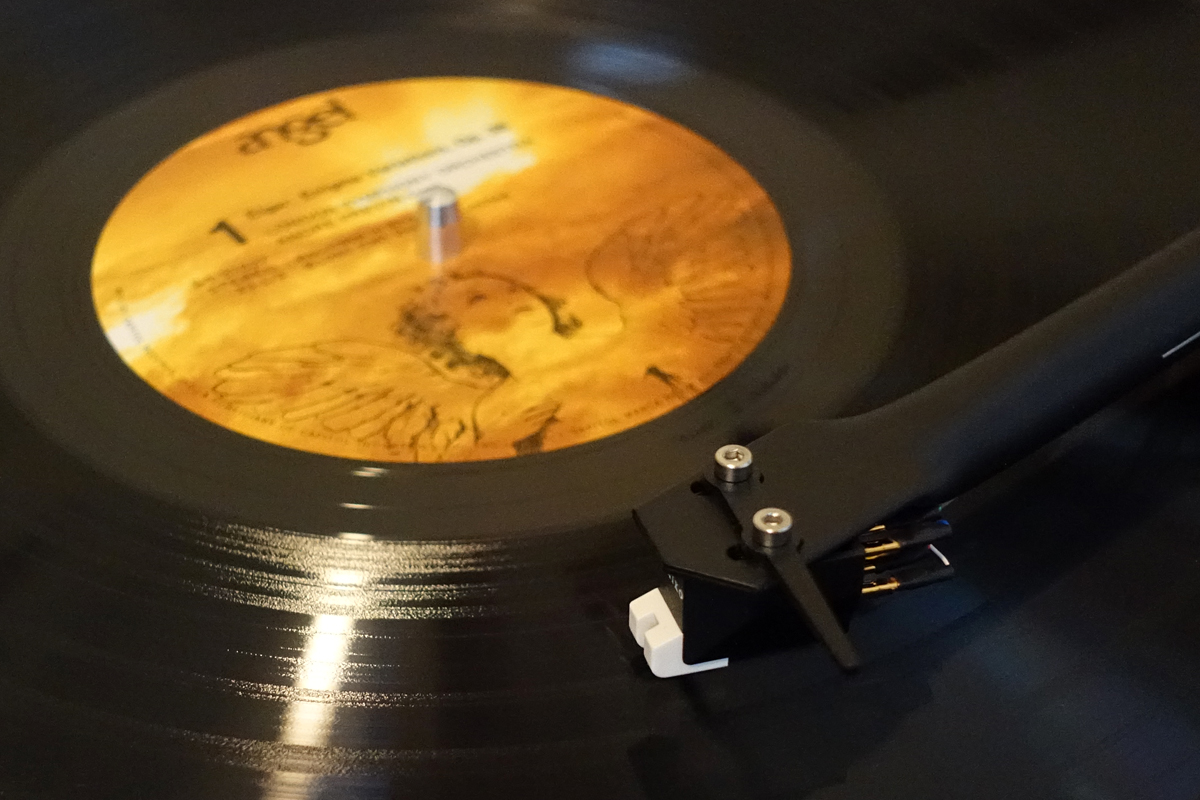Did this heading just make you do a double take? I wouldn’t be surprised if it did because Wi-Fi and turntable are two words you don’t expect to see back-to-back. Indeed, Pro-Ject Audio Systems’ T2 W ($1199; all prices in USD unless noted otherwise) is the first product of its kind: a turntable that can stream audio over a home network to multiple devices.
The T2 W isn’t quite plug and play, but it’s close—more on that later. It comes with a premounted Sumiko Rainier cartridge ($149 on its own) and has a built-in phono stage, obviating the need for a phono preamp downstream. The T2 W’s phono stage cannot be disengaged, however, so the turntable shouldn’t be connected to the phono input, if there is one, of the amplifying component.
And as the late Steve Jobs liked to say at Apple events, there is one more thing—that which makes the T2 W unique: an internal module that digitizes output from the T2 W’s phono stage and then streams it over the network the turntable is connected to. This feature will be invaluable to listeners who’d like to spin vinyl but don’t have a place for a turntable within interconnects’ reach. Or would like to play vinyl through more than one system.
You can stream from the T2 W to any device that supports the UPnP protocol, and many do, not just streamers: active loudspeaker systems, streaming integrated amplifiers, smart TVs, and media adapters. Apple devices and BluOS-enabled components are among those that don’t support UPnP. However, the Pro-Ject Control app has a secondary stream function that lets you send MP3 audio to non-UPnP devices—including BluOS components and Apple devices. I did not test this feature.
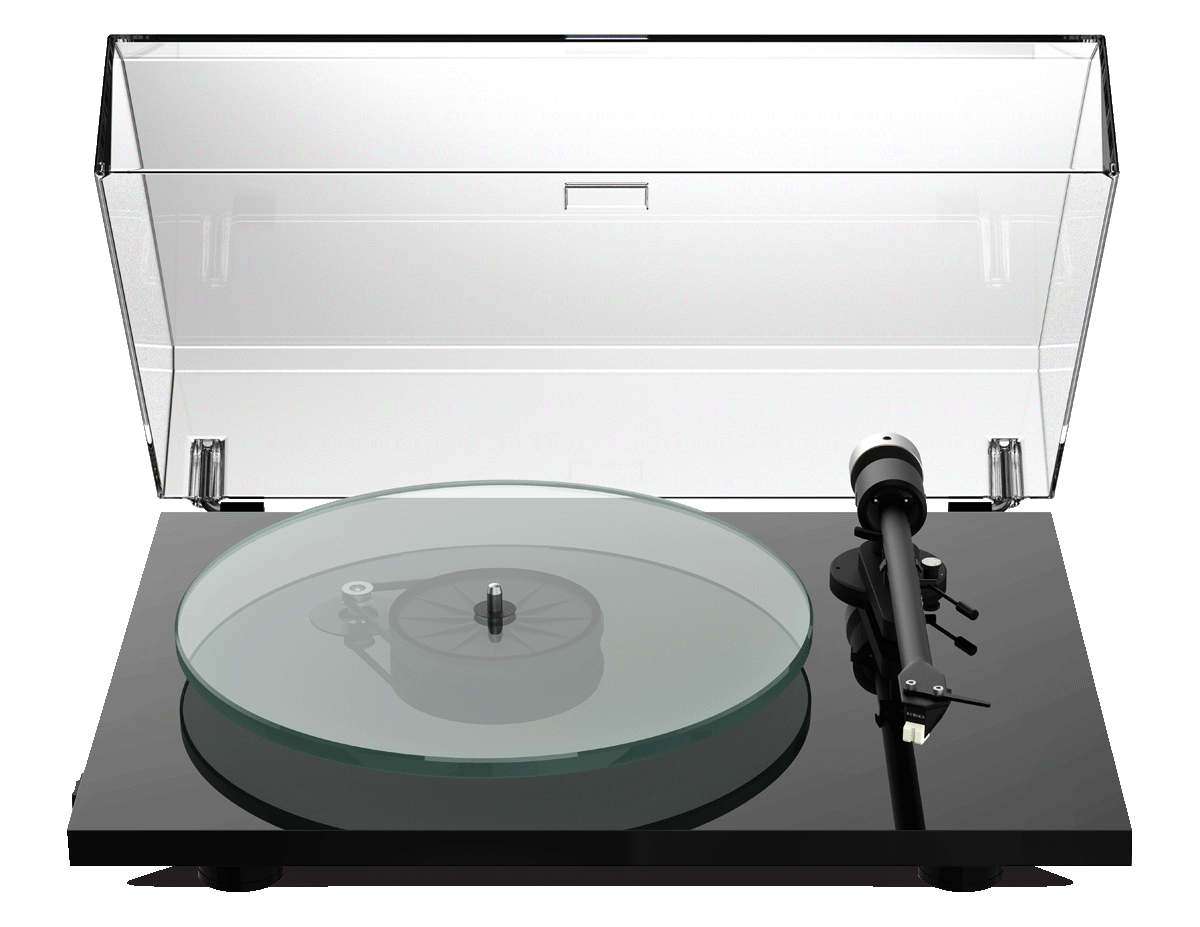
Of course, there are many turntables that let you send audio wirelessly via Bluetooth, including Pro-Ject’s popular T1 Phono BT ($599; $499 at the time of this writing) and Cambridge Audio’s Alva TT V2 ($1999), which I reviewed on June 15. But audio streaming by Wi-Fi has significant advantages over streaming by Bluetooth, including the following:
- Range. The 2.5mW class 2 Bluetooth transmitter of the T1 Phono BT has a range of approximately 33′, smaller if there are walls and other barriers between the ’table and playback device; Wi-Fi can cover a whole house.
- Flexibility. A Bluetooth turntable can stream only to the device with which it is paired; Wi-Fi streaming is accessible to multiple devices simultaneously.
- Sound quality. Bluetooth devices all use lossy compression. Advanced Bluetooth codecs, such as Qualcomm’s aptX HD and Sony’s LDAC, can handle hi-rez audio, but the process isn’t lossless, and not all playback devices support these codecs. By default, the T2 W transmits 256kbps MP3 audio, so it too is applying lossy compression. But it can also transmit 24-bit/48kHz lossless audio.
Description
Available in walnut laminate, white satin, and high-gloss black finishes, the T2 W measures 11.8″H × 21.3″W × 16.2″D and weighs 12.1 pounds—slightly larger and nearly 4 pounds heavier than the T1 Phono BT. The T2 W’s dust cover has beveled edges, the T1’s straight edges, but otherwise the two turntables look almost identical. Like the T1 models, the T2 W has a solid CNC-machined plinth with three isolation feet. These feet are not height-adjustable, though, so the turntable must rest on a level surface.
The only controls on the top of the plinth are the cuing lever and rotary antiskate dial, which is preset at the factory. On the left side of the plinth near the front is the speed/off switch. At the back, a 15V power supply socket is seen on the right and an ethernet port and a pair of RCA output jacks on the left. (As the phono stage is always engaged, there is no need for a ground terminal.) On the rear right are a Wi-Fi status LED and control button.
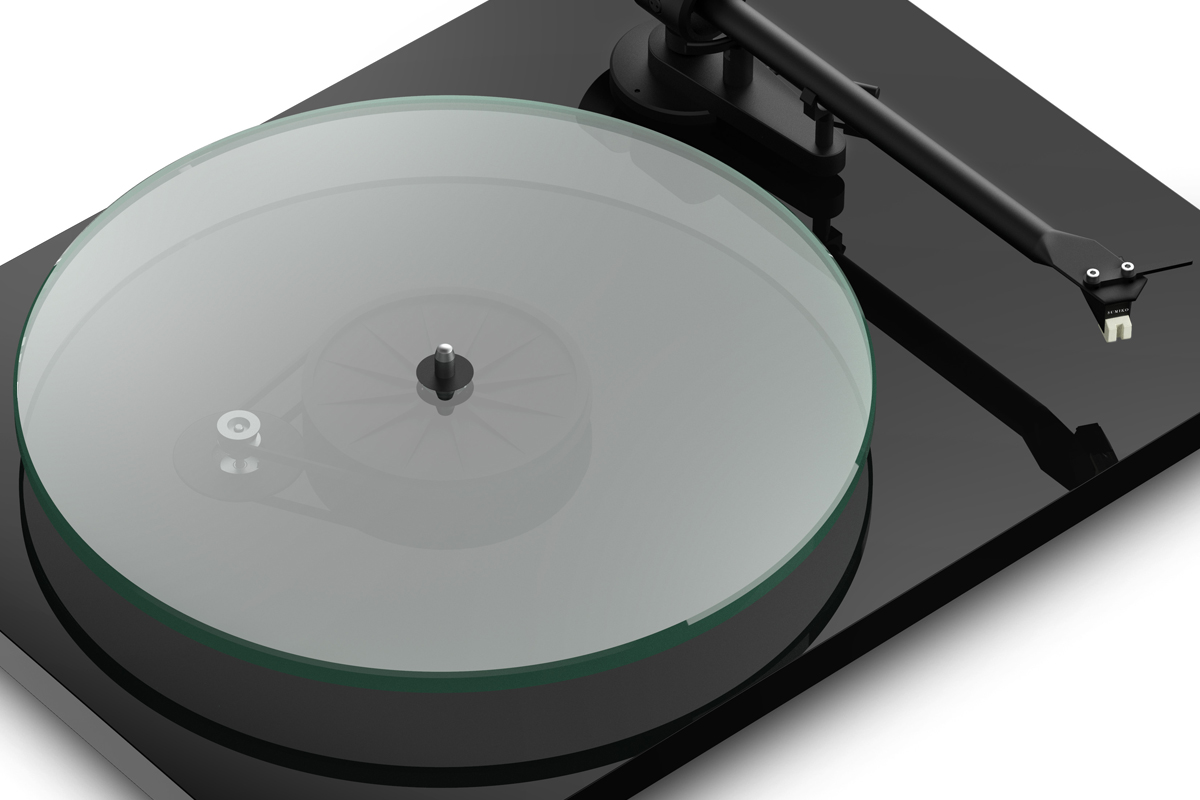
The superficial similarity between the T2 W and T1 Phono BT belies deeper, important differences. The T2 W has the Wi-Fi streaming module, of course, but it also has a superior cartridge. Like all T1-series turntables, the T1 Phono BT has a preinstalled Ortofon OM 5E cartridge ($69.99 when purchased separately). In an email exchange, Pro-Ject founder Heinz Lichtenegger told me that the company is shipping the Rainier with all T2 W turntables sold worldwide.
Like the tonearm in the T1 ’tables, the T2 W’s is a one-piece aluminum tube with an integrated headshell. But the T2 W’s arm is longer (9″ as opposed to 8.6″) and more rigid, and it has higher effective mass, which makes it a better match for the Sumiko Rainier, Lichtenegger said. The tonearm’s low-friction bearing was upgraded to accommodate the higher mass. The T2 W also has spring-based antiskating compensation, a feature T1 models lack.
The glass platter is thicker on the T2 W than on the T1 (10mm as opposed to 8mm) and, at 3.8 pounds, heavier as well. A black felt mat is supplied with both models. The platter-bearing assembly, which includes a stainless-steel spindle and a brass bushing, is the same on both models, as is the AC motor and DC/AC power-generator board. Unlike Pro-Ject’s T1 and T1 Phono BT turntables, the T2 W has electronic speed control. A three-position switch on the left side of the plinth selects between 33⅓ rpm, off, and 45 rpm. (The T1 Phono SB also has electronic speed control. But on the T1 and T1 Phono BT, you change speed by manually moving the belt to a different position on the pulley).
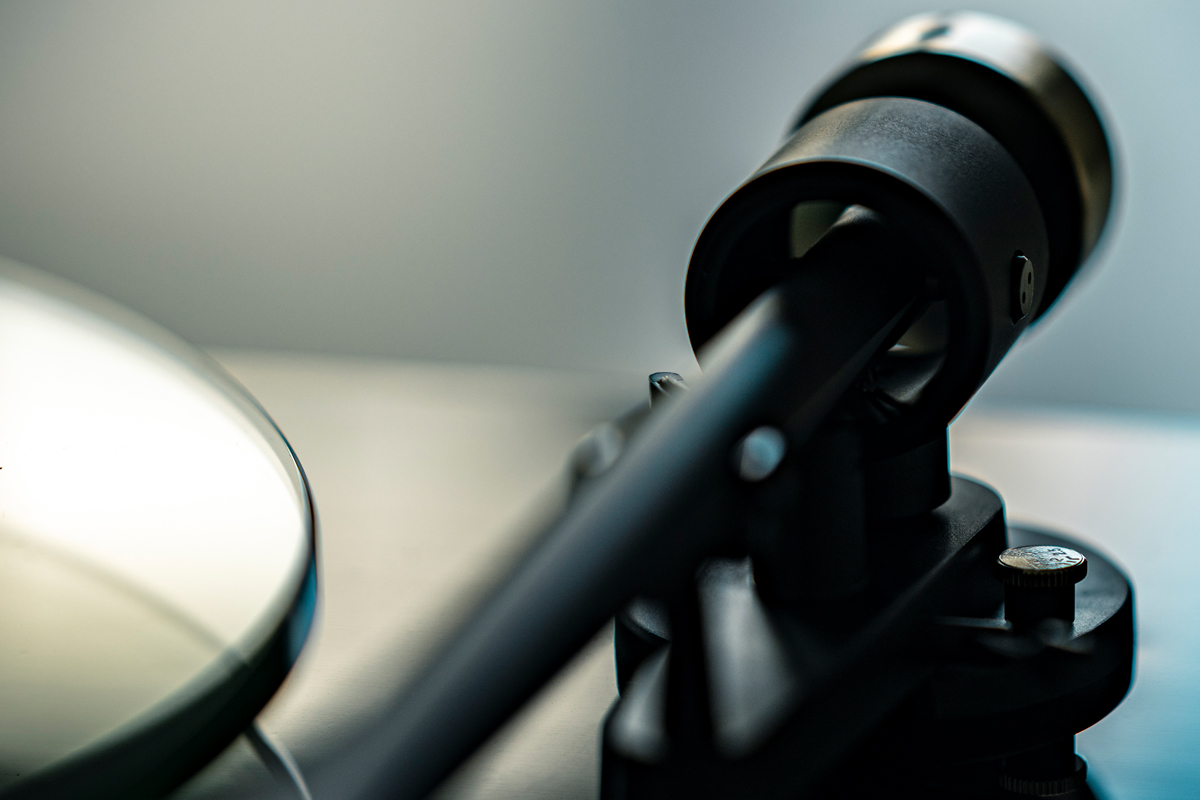
Pro-Ject claims the T2 W’s dual-stage split-passive MM phono preamp is the best-performing gain stage it has ever put in a turntable. The upgraded phono stage ensured maximum performance with Wi-Fi streaming, the company says.
Setup and software
For playback through an analog connection, the T2 W is as close to plug and play as a turntable gets. As noted, it ships with the Sumiko Rainier cartridge preinstalled. Vertical tracking force and antiskate are set at the factory. A stylus pressure gauge and an alignment protractor are included to facilitate installation of a different or a new cartridge.
Initial setup was a breeze. I plugged in the power supply, looped the drive belt around the subplatter and motor pulley, placed the glass platter and felt mat on top of the subplatter, and removed the cartridge cap and other protective materials.
Many buyers would choose the T2 W for its Wi-Fi streaming capability, of course. You can connect the ’table to your home network by Wi-Fi, or if it’s near your router (or an access point), you can simply run a network cable between the two. The T2 W serves up a web interface that allows you to select streaming devices for playback, perform firmware updates, and adjust settings. The Pro-Ject Control app, available for Android and iOS, offers the same functionality. You need this app if you want to use Wi-Fi to connect the T2 W to your home network.
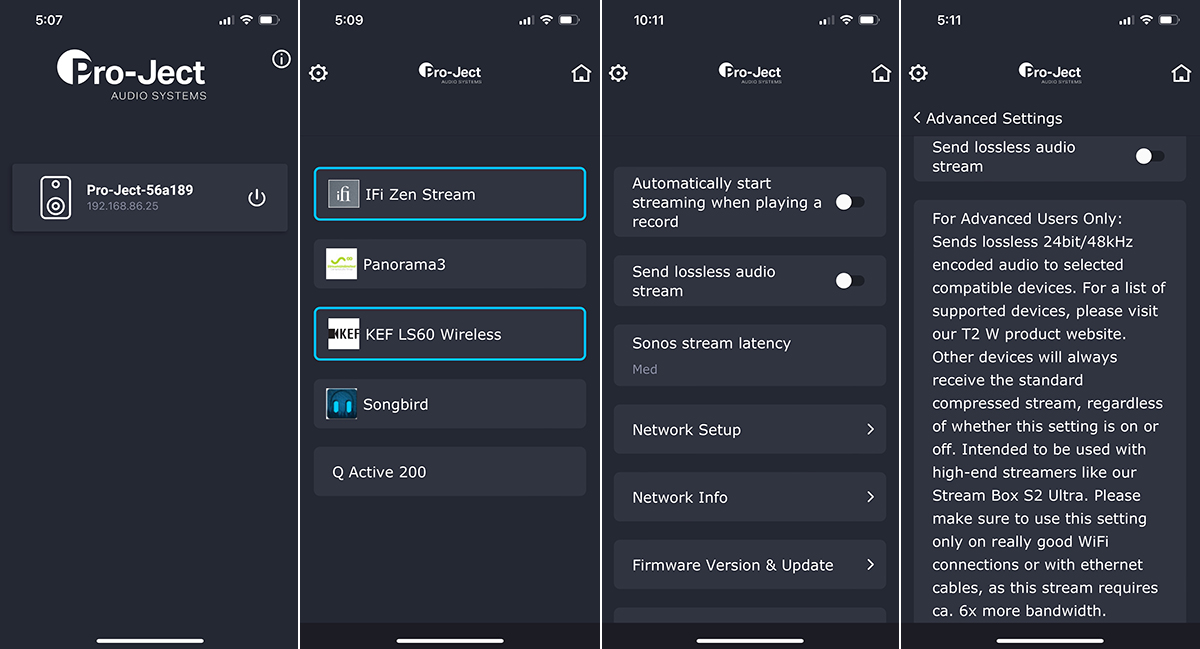
I downloaded the Pro-Ject Control app to my iPhone 14 and confirmed that the Wi-Fi status LED on the rear right of the plinth was blinking red, indicating that the streaming module was powered but did not have a network connection. About 15 seconds after I opened the Pro-Ject Control app, it connected to the ’table via Bluetooth Low Energy. I tapped the only option on offer, Wi-Fi setup, and was presented with available Wi-Fi networks. I selected mine, entered my network password, and the app uploaded network information to the ’table. A moment later, connection was established. Piece of cake. I repeated the process with the Control app on my Google Pixel 4a 5G phone with equal success.
I then restarted the app, and a list of UPnP devices on my network appeared—not just the KEF LS60 Wireless system in my living room, but the Q Acoustics Q Active 200 system in my home office, my Samsung Frame TV, and the Bowers & Wilkins Panorama 3 soundbar in my basement family room. Time to play some music.
A cautionary note
Naturally, I wanted to listen to the T2 W through my main speakers, the KEF LS60. And being the purist that I am, I wanted to send 24/48 FLAC lossless audio to the LS60, not lossy MP3. So, in the Advanced Settings menu of the Pro-Ject Control app, I turned on lossless streaming, then went back to the Home menu and chose the LS60 as the playback device. After a few seconds, an error message popped up: “Lossless stream failed to start. Consider disabling lossless.” I turned off the lossless option, and the T2 W resumed operation, happily streaming 256kpbs MP3 audio to the LS60 Wireless system.
The app displayed the same advisory prompt when I tried lossless streaming to my Q Active 200 system. Again, allowing lossy transmission, I got the ’table to play.
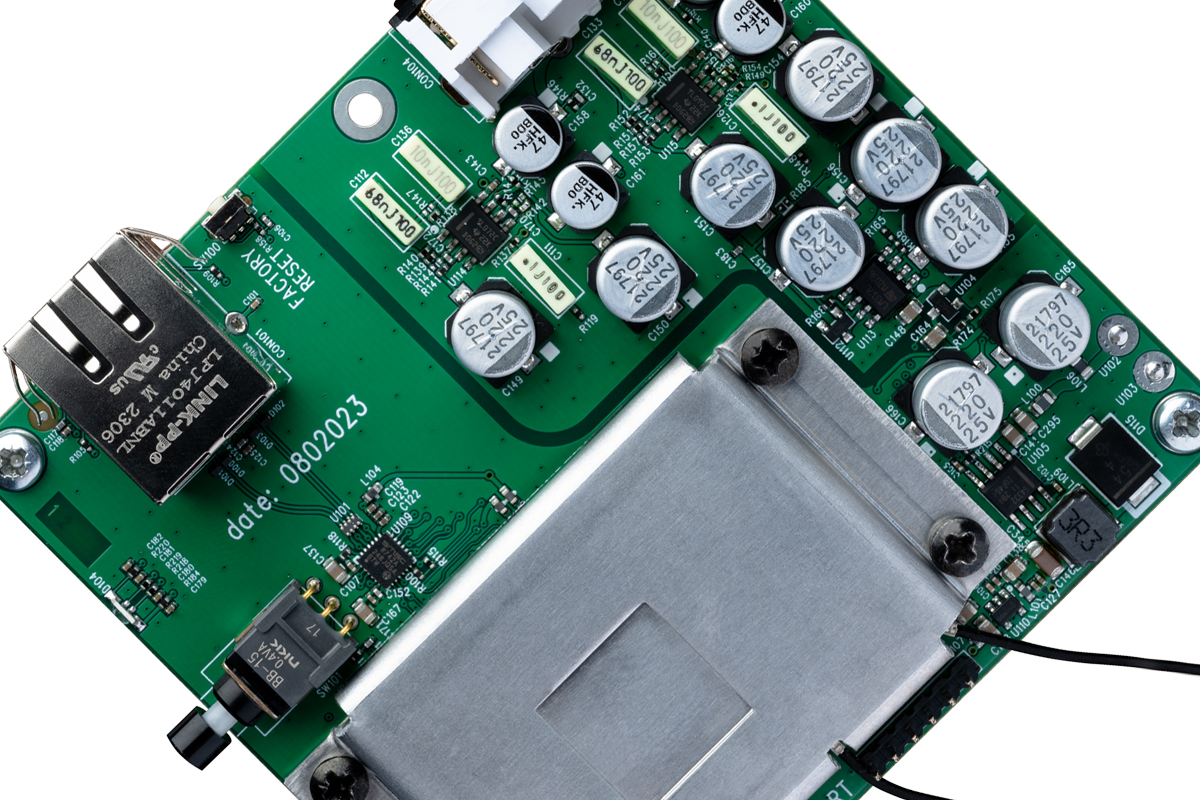
This didn’t come as a complete surprise. In the menu option for enabling lossless playback, Pro-Ject advises that lossless playback is “intended to be used with high-end streamers like [the] Stream Box S2 Ultra.” I didn’t have one of these kicking around, and Pro-Ject’s Canadian distributor could not provide me with one. But I did have two other streamers sitting on my equipment shelf: Andover Audio’s tiny Songbird and iFi Audio’s Zen Stream ($399). Lossless streaming to these devices produced no errors, only music.
I wrote to Pro-Ject about my experience. Product manager Dominik Hofer wrote back, informing me that virtually all UPnP devices will play the MP3 stream from the T2 W. “Essentially, we’re doing nothing different from what MP3 web radio stations are doing,” he explained. But streaming FLAC-encoded lossless audio is a greater challenge, he added. “We are essentially generating a FLAC-encoded webstream, and this is different from sending ‘normal’ files over UPnP.” Hofer also explained that livestreaming in FLAC format is not currently supported by StreamUnlimited’s SDK software platform, which KEF uses in the LS60 Wireless. Andover Audio sources the Songbird’s streaming module from a different vendor, Linkplay. Pro-Ject’s Stream Box S2 is also based on the Linkplay platform, Hofer said. “We have found that most new Linkplay solutions can do FLAC livestreams just fine.”
With that in mind, I added the Songbird to my test setup, hoping to thereby hear lossless audio from the T2 W through my KEF system. But then a monkey wrench was thrown in the works. Shortly before I began my audition of the T2 W in mid-July, Pro-Ject pushed out a software update for it. Along with an improved UI, there had been a change to how the turntable handles devices that don’t support FLAC streaming. It automatically streams compressed MP3 to such devices even when lossless streaming is enabled, but no error message appears and no advice to disable lossless streaming.
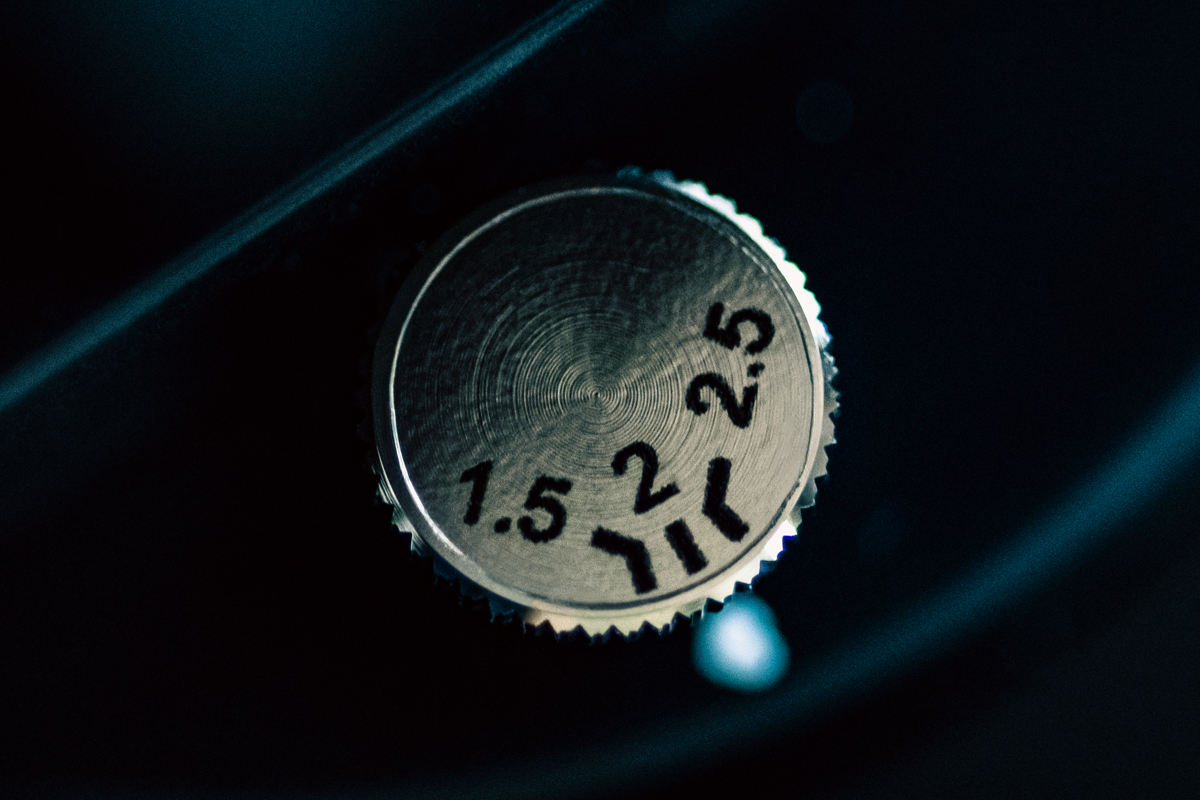
The KEF Connect app, like controller apps for some other UPnP devices, shows format and resolution when receiving streaming audio. After the software update, when I streamed to the LS60 through the Songbird, lossless streaming enabled, KEF Connect still showed 256kbps MP3. Format and resolution are not shown in the Songbird app, so I had no way of knowing for certain whether the streamer was receiving 256kbps MP3 audio or 24/48 FLAC audio. But the T2 W was sending a 24/48 FLAC stream to the Songbird when I enabled lossless streaming before the update, so it was reasonable for me to assume that it was sending 24/48 audio after the software update as well.
However, as I later learned, following the software update, the T2 W sends lossless audio only to specific devices that Pro-Ject has determined fully support FLAC livestreaming. Apparently, this list does not include the Songbird or Zen Stream. Bear this in mind when reading my listening impressions below
I have two other observations: When I streamed from the T2 W, there was a lag of about three seconds between the time the needle hit the groove and the time music started. When I streamed from the T2 W simultaneously to the KEF speakers in my living room and the Q Acoustics speakers in my home office, the two streams were out of sync by a second or more.
Listening 1
For my first round of listening, I connected the T2 W’s line-level outputs to the line-level inputs on my KEF LS60. I connected the Songbird streamer to the LS60, too, via the optical input.
I began with my most recent vinyl purchase: a reissue of The Köln Concert, Keith Jarrett’s legendary live solo-piano recording from 1975 (ECM 1064/65 272 7888). Selecting the LS60 as the playback device in the Pro-Ject Control app and selecting the Wi-Fi input on the LS60, I was hearing a 256kbps MP3 stream, but it sounded wonderful. An occasional Wi-Fi drop disrupted the playback momentarily, but this problem did not recur in subsequent listening sessions.
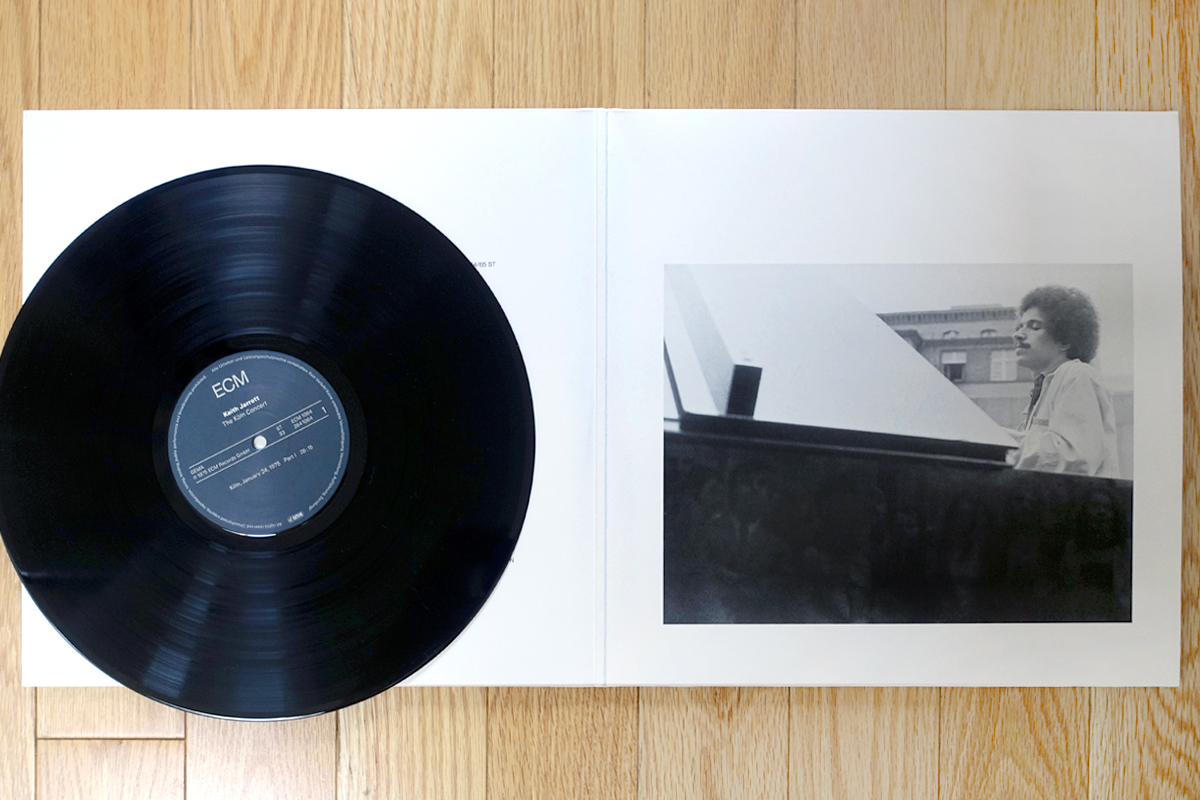
The piano tone was rich and full in the lower registers, brandishing fast, dramatic attacks. In the conclusion to Part II b, Jarrett makes extensive use of the sustain pedal. I loved the bold attacks and the long decay that followed as the rousing reverberations attenuated and faded away, first from the concert grand, then from the concert hall. Would this record sound better with a direct analog connection? What about a lossless stream? I’d find out soon enough. Listening to the record, I wasn’t consumed by these questions; I was just immersed in the music.
Next, I selected the Songbird as the playback device in the Pro-Ject Control app and switched to the optical input on the LS60. The switchover took about 30 seconds. This was before the software update, so what I was hearing was 24/48 lossless audio. The sound seemed just a little more incisive. There was a bit more air around notes than with the MP3 stream that the T2 W was sending to the LS60 system. Jarrett’s rapid-fire arpeggios seemed better delineated. The differences weren’t great, but they were noticeable.
Later in the review period, after the software update, I toggled between lossless and MP3 streaming in the Pro-Ject Control app while streaming to the Songbird. I struggled to hear any differences. As it turns out, the Songbird was receiving an MP3 stream even with lossless streaming enabled, so there were no differences to be heard.
The differences were quite obvious when I compared the direct analog connection with the MP3 stream. With a direct connection, Jarrett’s piano runs were articulated a bit more clearly. In the grand conclusion to Part I, the sound was a tad less dense. The piano tone was slightly smoother and harmonically richer. It was a little clangier and harder with the MP3 stream. The portrayal of space was also more convincing with a direct connection. The soundstage had more depth, and there was more space around notes. But these differences weren’t huge; they were noticeable only in a direct comparison. Listening to the MP3 stream uninterruptedly for a while, I didn’t discern any deficiency.
Next up was Andre Previn’s 1980 recording of Edward Elgar’s Enigma Variations with the London Symphony Orchestra (Angel S-1-37627). Premiered in London in June 1899, this lush, romantic piece comprises an original theme followed by 14 variations, portraying the composer’s wife and 13 of his friends.
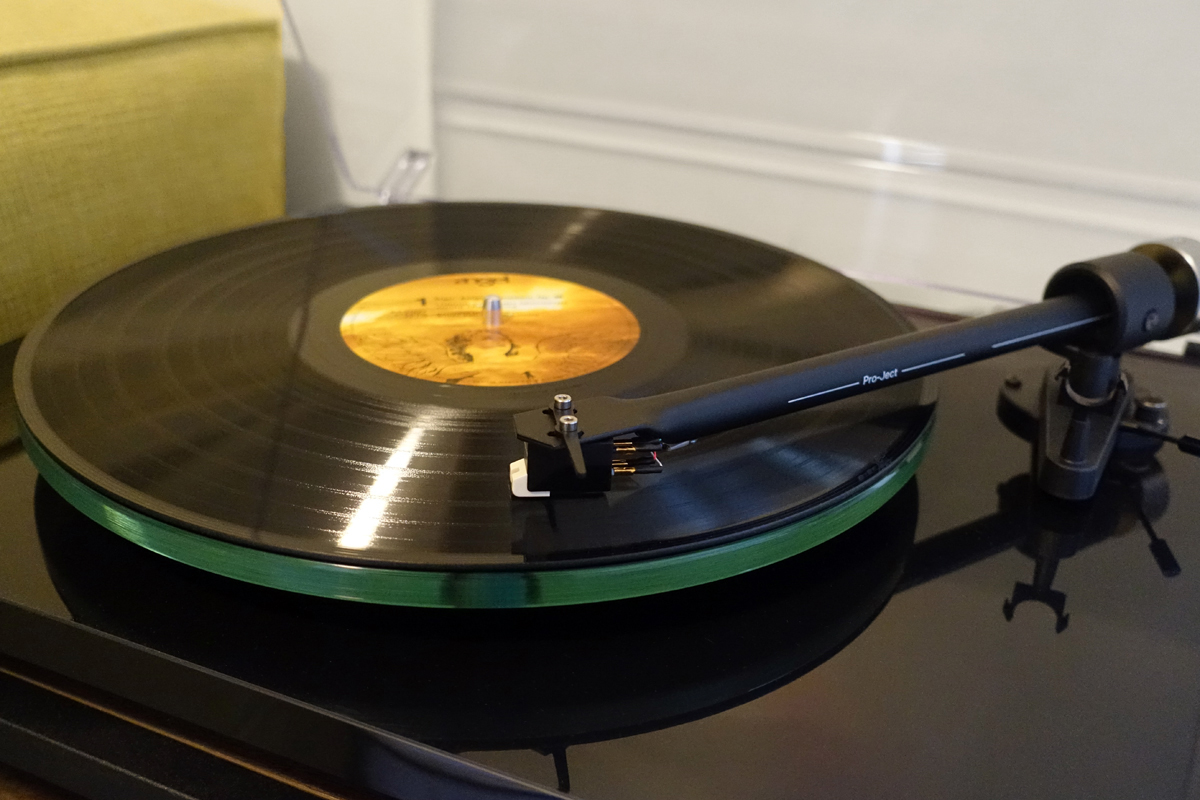
Streaming from the T2 W to the LS60, the sound of the violins and violas in this recording had lovely tone and texture, but the double basses had a slightly droning quality. That may have been due to the proximity of the turntable to the right speaker—air- and structure-borne vibrations may have been affecting retrieval of information from the record. Also, the sound was lacking in transparency somewhat, which is unusual for a recording from the legendary team of producer Christopher Bishop and engineer Christopher Parker.
Switching to a direct analog connection, I noticed that orchestral textures were a little more transparent, and, again, the soundstage had more depth. It was closer to what I’d expect from a Bishop-Parker recording. Violins were a little breathier with the direct connection, and they had more bite without sounding wiry or steely. While dense orchestral passages sounded a bit homogenized with the MP3 stream, they were separated a little more clearly with the direct connection. But, again, the differences were small. I’d use the direct analog connection from the T2 W if practicable, but I’d stream from it without hesitation if not.
Comparison 1
Cambridge Audio’s Alva TT V2 direct-drive turntable is arguably the most ambitious Bluetooth turntable around. I started this comparison with a direct connection from the two ’tables to the KEF LS60, using their built-in phono stages.
On The Köln Concert, piano attacks sounded slightly blurred with the T2 W compared to the Alva. High notes had a little less sparkle, low notes had less authority, and Jarrett’s touch was not as clearly conveyed. The Cambridge table sounded more composed, its presentation a little more coherent.
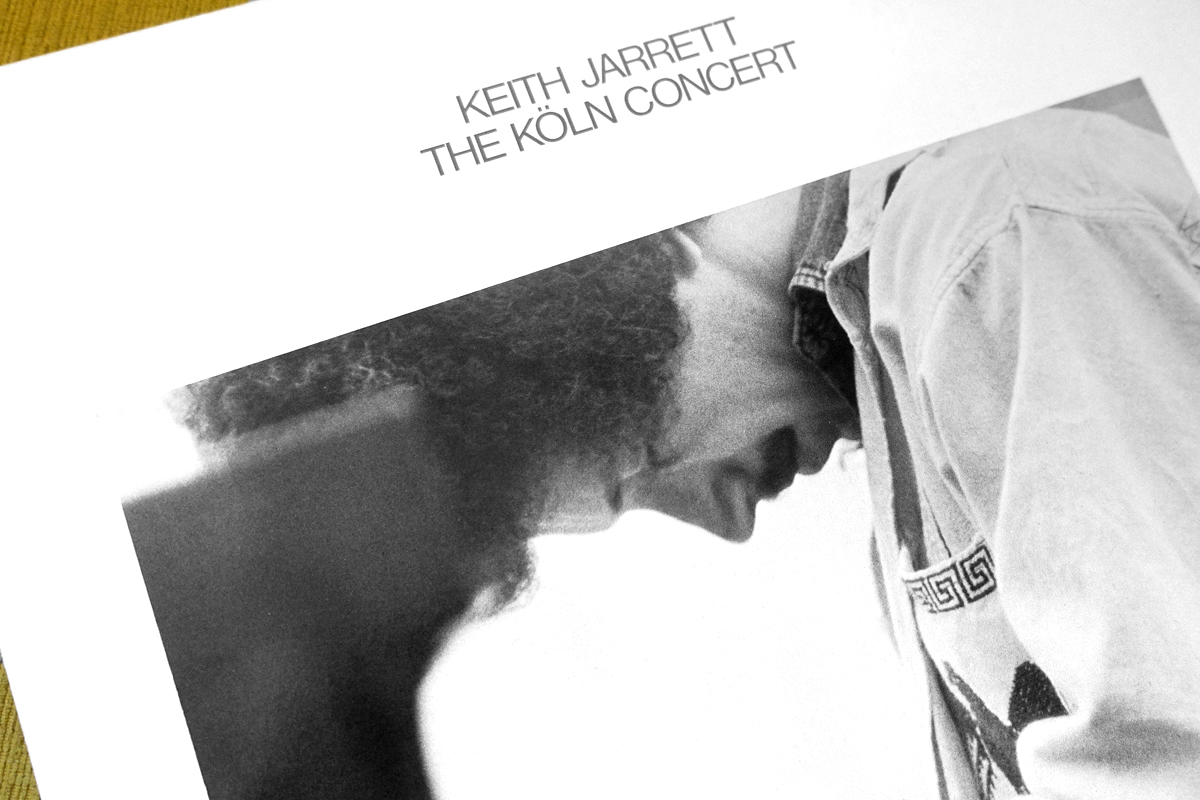
Next, I compared the Alva, streaming via Bluetooth, with the T2 W, streaming 256kbps MP3 via Wi-Fi. The difference was less than it had been with the direct connection, but the Alva was still more incisive and provided greater insight into Jarrett’s playing. With the T2 W, low notes were thuddier and less authoritative; everything was a little more blurred.
Streaming the Enigma Variations from the Alva via Bluetooth, I noticed that orchestral textures were more transparent than they were when streaming from the T2 W via Wi-Fi. Brass instruments had more bite with the Alva, but were not as strident during loud passages as they were with the T2 W. Violins, though, were sweeter toned with the Alva. The soundstage was deeper with the Alva and had better front-to-back layering; it was more two-dimensional with the T2 W.
The differences in sound quality between the two turntables, as revealed by these recordings, were consistent with their relative prices. Flexibility and simplicity of operation, however, are also important considerations. The Alva, when turned off, would often have to be paired anew with the KEF speakers for a Bluetooth connection. The Wi-Fi connection between the T2 W and the speakers (or other UPnP devices on my network) worked every time I selected them in the Pro-Ject Control app.
Listening 2
For my second round of listening, the superb Triangle Borea BR03 BT powered speaker system ($799), on sand-filled stands, took the KEF LS60 speakers’ positions on either side of the fireplace in my living room. I connected the T2 W to the Borea’s RCA inputs and the Songbird to its optical S/PDIF input. The Borea system’s built-in phono stage was disengaged. This round of listening took place after the software update, so the T2 W would have been sending 256kbps MP3 to the Songbird.
I opened this listening session with Landfall, by Laurie Anderson and the Kronos Quartet (Nonesuch 564164-1). This extraordinary album, a 2019 Grammy Award recipient, recounts Anderson’s experience of Hurricane Sandy in 2012. Streamed from the T2 W to the Songbird, the strings of the Kronos Quartet were clearly arrayed between the two speakers. Cello pizzicatos had just the right degree of snap and warm resonance from the wooden body. The violins had a lovely silvery tone. But I heard less depth than I’m accustomed to with this recording; synths and electronic effects weren’t very far behind the strings.
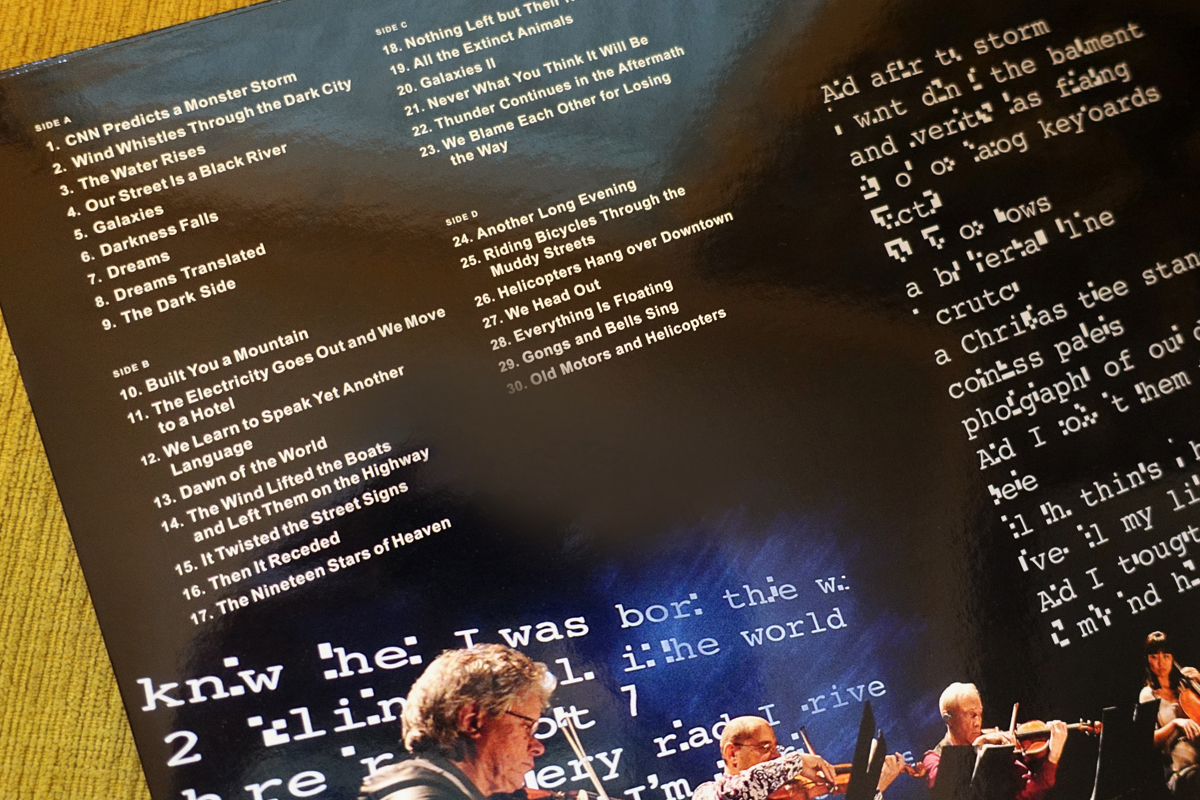
Switching to the direct analog connection, I noticed that the presentation was more transparent, instruments were better separated, and the soundstage had greater depth. The violin tone was just a little warmer, a little less steely.
I ended this listening session with “Lady Macbeth in Chains,” from A Beginner’s Mind, a collaborative album by indie musicians Sufjan Stevens and Angelo De Augustine (Asthmatic Kitty Records AKR143). The digital stream to the Songbird had gobs of atmosphere. Little details like the action of the musicians’ fingers on the two strummed guitars on far left and right came through convincingly. The singers’ voices, Angelo De Augustine’s falsetto and Sufjan Stevens’s tenor, had palpable presence right in the middle of the soundstage. Playing this song with the direct connection, it sounded a little warmer and more organic, and had a little more space around the musicians. But the differences were tiny, confirming yet again that streaming from the T2 W imposes very little penalty on sound quality.
Comparison 2
Next, for comparison, I re-engaged the Borea BR03 BT’s built-in phono stage and connected to it my Pro-Ject Debut Carbon Evo turntable ($869 CDN with Ortofon 2M Red cartridge), which doesn’t have one.
With the Debut Carbon Evo, the Kronos Quartet’s violins on Landfall had more bite and texture, and I was more aware of the fricative whisper of bows drawn across strings. The presentation was more open and spacious with the Evo, and the soundstage was deeper and taller. Imaging was more precise, too; I could easily locate the musicians’ positions. The T2 W had a little more body, but the sound was a little more homogenized. But these differences are to be expected. Pro-Ject’s Debut Line is a higher-level series than the T Line.
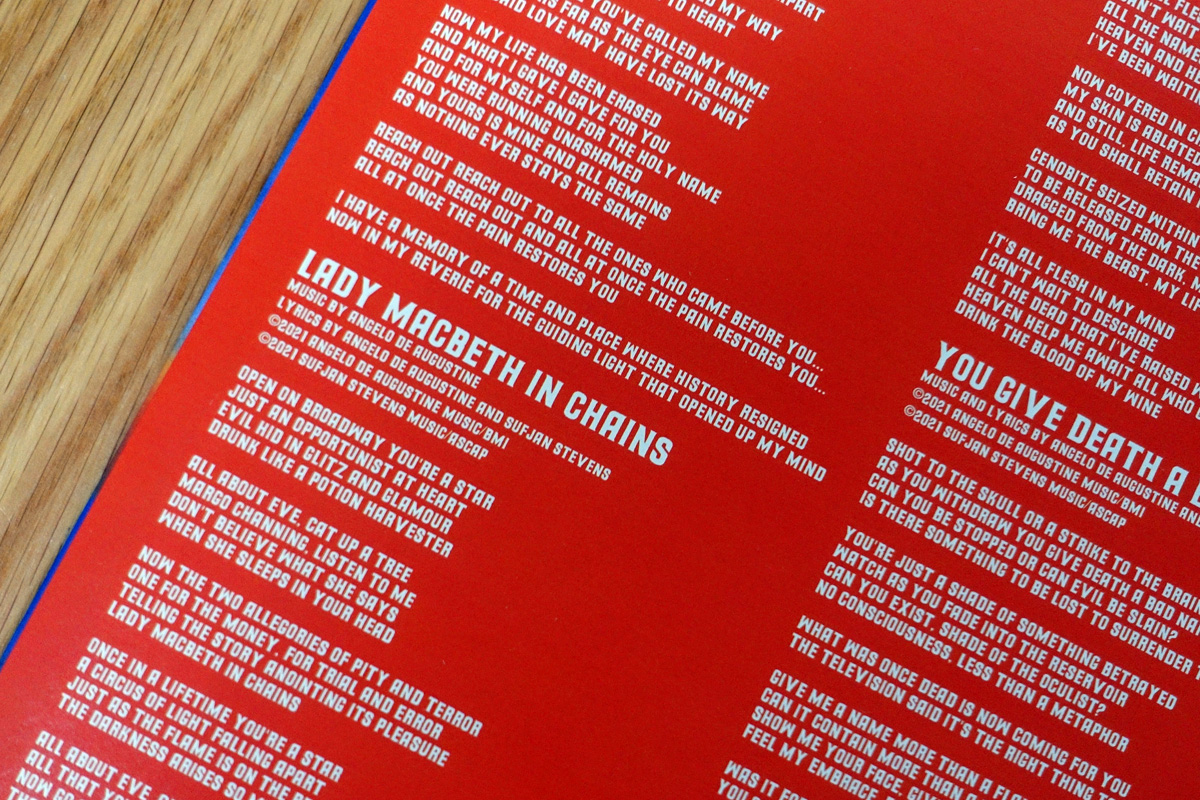
On “Lady Macbeth in Chains,” deep bass-guitar notes were well defined; much less so on the T2 W. The high strings on the guitars rang a little more convincingly on the Debut Carbon Evo, and I could hear the singers’ enunciation a little more clearly. But the sound of the T2 W was a little fuller and more authoritative. All things considered, there was a lot to like about both turntables’ renditions of this lovely indie song.
Conclusion
Pro-Ject’s US distributor describes the company’s T Line series, of which the T2 W is part, as “streamlined for audiophiles on a budget.” What about audiophiles who’d like to be able to stream vinyl via Wi-Fi but want a higher-performance ’table? Pro-Ject offers several tiers of turntables above its T series. I asked Heinz Lichtenegger whether the company might offer higher-end models with Wi-Fi streaming in the future. He said that nothing like this is currently planned.
I also asked whether Pro-Ject might offer a separate phono stage with Wi-Fi streaming. “Yes, we plan a Box Design model that will connect to any TT and make it wireless,” Lichtenegger responded. Hallelujah! I’d be all over a product like that because it would make it easy to stream music from the Debut Carbon Evo ’table in my home office to the LS60 Wireless system in my living room.
But that’s me. I am sure there are many “audiophiles on a budget” whose listening setups preclude direct connection of a turntable. I’m also sure that there are many budget-constrained audiophiles who’d like to play their vinyl collections in more than one room, but don’t want to own more than one turntable. Pro-Ject Audio System’s T2 W turntable is tailor-made for listeners like these. With the T2 W, Pro-Ject has created a breakthrough turntable for the streaming era.
. . . Gordon Brockhouse
Associated Equipment:
- Active and powered loudspeakers: KEF LS60 Wireless, Triangle Borea BR03 BT.
- Turntables: Cambridge Audio Alva TT V2, Pro-Ject Audio Systems Debut Carbon Evo with Ortofon 2M Red cartridge.
- Streamers: Andover Audio Songbird, iFi Audio Zen Stream.
- Smartphones: Apple iPhone 14, Google Pixel 4a 5G.
- Network: Google Wifi four-node mesh network.
Pro-Ject Audio Systems T2 W Wi-Fi Turntable with Sumiko Rainier Cartridge
Price: $1199.
Warranty: Two years, parts and labor.
Pro-Ject Audio Systems
Wirtschaftspark A5
Analogweg 1
2130 Mistelbach
Austria
Website: www.project-audio.com
US contact:
Pro-Ject Audio USA
11763 95th Ave N
Maple Grove, MN 55369
Phone: (510) 843-4500
Website: www.pro-jectusa.com



